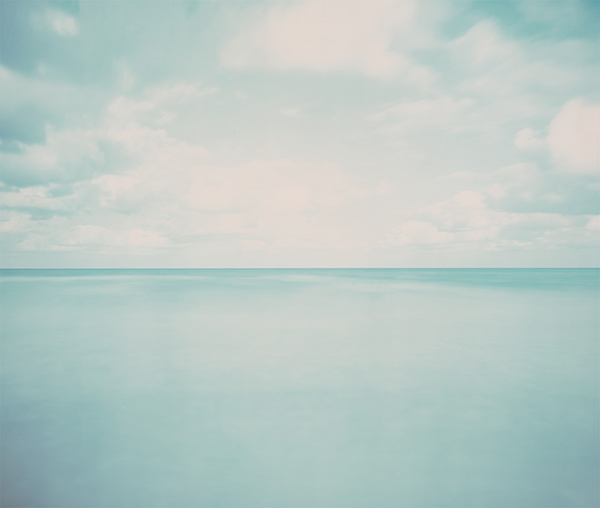Christian Martinelli – Confini the cube

“Confini” appartiene al ciclo di opere 00A, una serie di progetti decennali in cui l’artista utilizza la fotografia come mezzo, fine, o testimone di tematiche a lui care.
Comunicato stampa
“Grenzen” ist Teil des Werkzyklus “00A”, eine Projektserie in der Christian Martinelli seit Jahrzehnten die Fotografie als Medium, Zweck, und Zeugnis seiner Lieblingsthemen benutzt.
La lunga striscia di sabbia (Der lange Sandstreifen) von Pier Paolo Pasolini, in dem der italienische Filmemacher, Poet und Künstler 1959 Italien von Ventimiglia im Westen bis Triest im Osten porträtiert hatte, war Inspirationsquelle für Martinellis solitäre sechsmonatige Reise. Im Zeitrahmen von fünf Jahren hat er über 20.000 km zurückgelegt, und präsentiert nun diese Reise in seinem Gesamtumfang im Rahmen von 70 Monotypen.
Die Bilder wurden mit dem sogenannten “cubo” geschaffen, ein “Kubus”, der vom Künstler selbst als Fotoapparat und gleichzeitige Kunstinstallation konzipiert wurde, der die Landschaft einerseits abbildet und reflektiert.
“Confini” (Grenzen) entspringt der inneren Notwendigkeit des Künstlers, sich mit dem Thema der territorialen Zugehörigkeit zu beschäftigen: wie ein Tier “seinen” für sich beanspruchten Lebensraum kennzeichnet und damit eingrenzt, zeichnet der Mensch Linien auf geografischen Karten ein. Der symbolische Akt, seinen “Kubus” auf Grenzlinien in die Landschaft zu stellen, wird für Christian Martinelli die Modalität, Spuren seiner vorübergehenden Präsenz zu setzen.
Martinelli versteht die Grenzlinie nicht als “Ende” denn als “Beginn”, und repräsentiert sie in seinen Bildern, in denen sich deren Linien verschmelzen.
Aufgrund der langen Belichtungszeiten verliert sich die Horizontlinie, wodurch ein Kontinuum in der Morphologie der reellen Landschaft entsteht. Pasolinis Aufmerksamkeit war dem anthropologischen Kontext zugewandt, Martinelli hingegen versetzt seine auf den natürlichen Kontext der “Grenzen”. Es handelt sich also nicht um eine dokumentaristische Darstellung der Landschaft, sondern um eine Reflexion, eine intime Suche nach deren Poesie. Der Künstler erstellt Bilder mit unzähligen chromatischen Nuancen, eher der Malerei als der Fotografie zugeschrieben. Ähnlich den abstrakten Seebildern von William Turner, sind Martinellis Bilder einzigartig und unwiederholbar.
Carla Cardinaletti und Christian Martinelli
it
“Confini” appartiene al ciclo di opere 00A, una serie di progetti decennali in cui l’artista utilizza la fotografia come mezzo, fine, o testimone di tematiche a lui care.
“La lunga striscia di sabbia” che Pier Paolo Pasolini realizzò nel 1959 ritraendo l’Italia da Ventimiglia a Trieste è una fonte di ispirazione del viaggio solitario lungo sei mesi che Martinelli ha intrapreso. Nell’arco di cinque anni ha percorso circa 20.000 chilometri, restituendo l’intero periplo dell’ Italia attraverso 70 immagini monotipo.
Le immagini sono realizzate con il “cubo”, un oggetto che è sia macchina fotografica progettata dell’ artista, sia opera installativa, che cattura e al contempo riflette il paesaggio.
“Confini” nasce dalla necessità che l’artista ha di confrontarsi con il tema dell’appartenenza a un territorio; come l’animale segna il “suo” spazio, delimitando il proprio confine così l’essere umano disegna linee su mappe geografiche. L’atto simbolico di posizionare il “cubo” all’interno del paesaggio al confine diventa per l’artista la modalità per tracciare il suo passaggio.
Martinelli non concepisce il confine come “fine”, semmai come “inizio” e lo rappresenta con immagini, in cui le sue linee si amalgamano.
Attraverso i lunghi tempi di esposizione la linea dell’ orizzonte si perde creando un continuum tra i tratti della morfologia del paesaggio reale. Rispetto a Pasolini, Martinelli sposta l’attenzione dal contesto antropologico a quello naturale dei “confini”. Non è dunque una rappresentazione documentaristica dei luoghi, bensì una riflessione, una ricerca intima della poetica del paesaggio. L’artista restituisce immagini dalle innumerevoli sfumature cromatiche, ascrivibili più a un dipinto che a una immagine fotografica. Come le marine astratte di William Turner anche le immagini realizzate dall’ artista sono opere uniche e irripetibili.
Carla Cardinaletti e Christian Martinelli
en
“Borders” belongs to the 00A cycle of works, a series of a ten-year long project in which the artist uses photography as a means, purpose, or witness to express themes important to him.
“The long strip of sand” that Pier Paolo Pasolini created in 1959, portraying Italy from Ventimiglia to Trieste, is a source of inspiration for the solitary six-month journey that Martinelli has undertaken. Over a five-year period, he traveled about 20,000 kilometers, returning the entire circumnavigation of Italy through 70 monotype images.
The images are obtained by using “the Cube”, an object which is both a camera, designed by the artist, as well as an installation work that captures and reflects the landscape at the same time.
“Borders” is born from the need that the artist has to deal with the theme of belonging to a territory; as the animal marks “its” space, delimiting its own boundaries, so does the human being, by drawing lines on geographical maps. The symbolic act of positioning “the Cube” within the landscape on the border becomes a way for the artist to trace his passage.
Martinelli does not conceive the border as an “end”, rather as a “beginning” and he represents it with images in which its lines blend together.
By using long exposure times, the horizon line dissolves creating a continuum between the features of the morphology of the real landscape.
Unlike Pasolini, Martinelli shifts the attention from an anthropological context to the natural one of the “borders”. It is therefore not a documentary representation of places, but a reflection, an intimate research on the poetics of the landscape. The artist returns images with infinite shades of color, more similar to a painting than to a photographic image. Like the abstract oceans of William Turner also the images realized by the artist are unique and unrepeatable works.
Carla Cardinaletti and Christian Martinelli.



